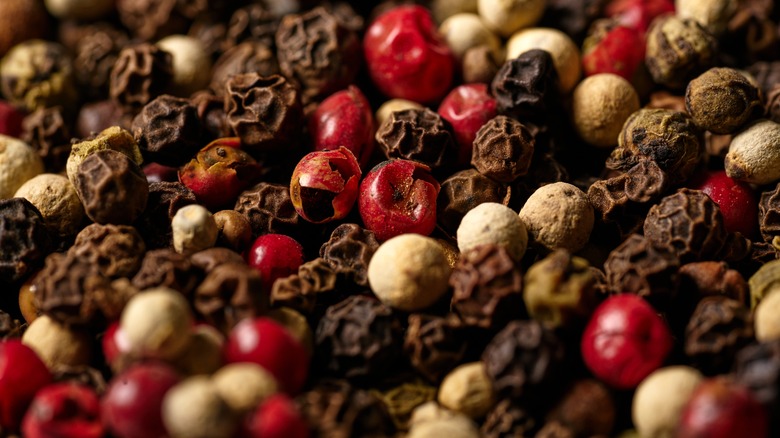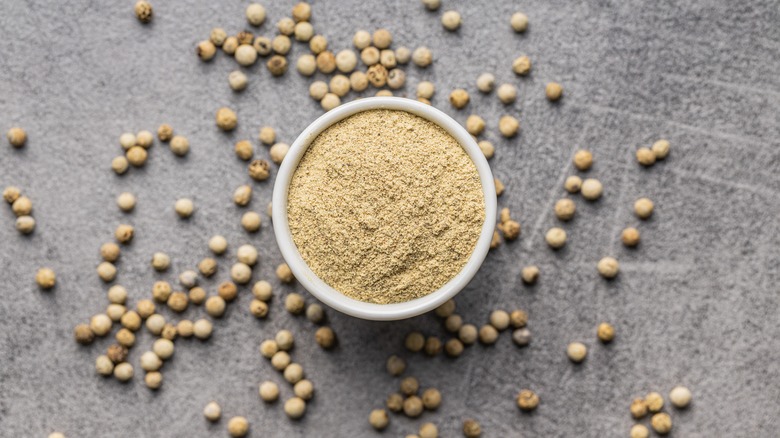The Flavor Difference Between White And Black Pepper
To the beginner's eye, pepper is pepper — the only distinction being whether or not it's freshly cracked. But, a quick walk down the spice aisle of your local grocery store proves differently. According to America's Test Kitchen, pepper is one of the most used spices in the world, and its varieties range in color from green to white to black, depending on the stage at which the peppercorns are harvested and how they are processed.
Much like wine or coffee, a peppercorn's flavor can vary greatly depending on its terroir, or the combination of elements in its natural environment, as Mirriam-Webster defines it. So, while they may look the same, you'll commonly find different types of black pepper labeled by the various places of origin — from the Malabar Coast of India to Lampong, the southernmost province of Indonesia — that taste very different from one another.
However, the opposite is also true. Some peppercorns' differences are much more apparent, as in the case of white and black pepper, with flavor differences that are much more than meets the eye.
White pepper vs black
Visually, the difference between black and white pepper is literally that: black and white. However, on your palate, those colors translate into a rainbow of different aromas and temperatures. As Ethan Frisch, co-founder and co-CEO of spice brand Burlap and Barrel, told Food Network, "Black peppercorns typically are hotter than white peppercorns, while white peppercorns are earthier." The difference stems from white pepper's unique processing method.
Unlike black peppercorns, white peppercorns undergo a soaking process that removes their skins before they're dried. However long they are left to soak determines the depth of their flavor, ranging from mildly fermented to straight-up funky. Fermented white pepper has a flavor comparable to miso paste and — much like miso's use in amping up roasted vegetables — is a vegan ingredient that can be used to add umami flavor to your go-to savory dishes. It's also preferred in light-colored foods, where the flavor of black pepper is needed, but not the color.
That being said, black and white pepper can be used interchangeably. However, if you're substituting black pepper for white, Frisch recommends playing around with different combinations of nutmeg and ginger — the two flavors he claims it pairs the best with.

